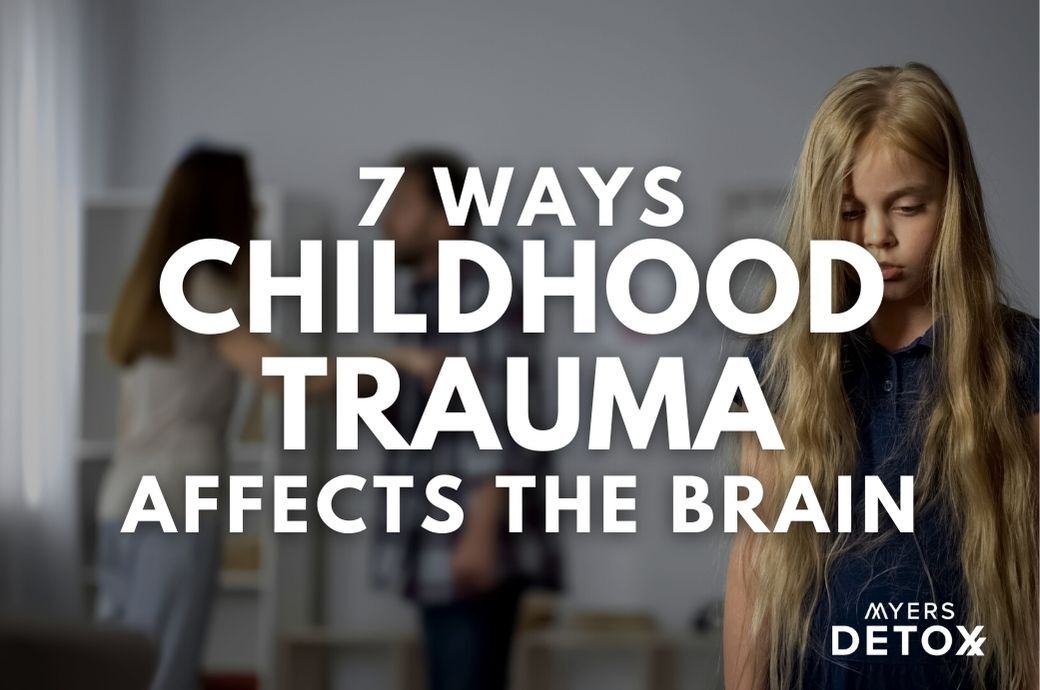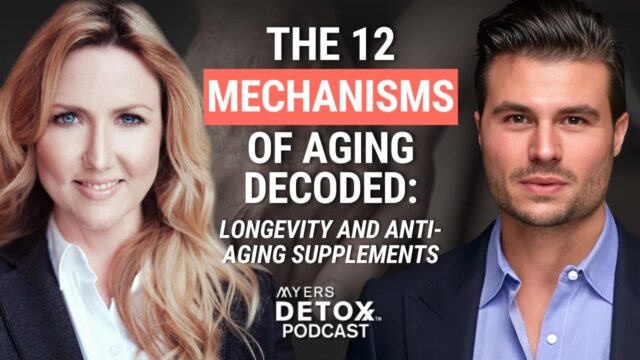The experiences you have as a child can greatly impact the way you view the world as an adult. Discover how childhood trauma affects brain and uncover the healing steps you can take to help you move away from trauma and into a state of peace.
The word “trauma” is being thrown around a lot these days as people are becoming more curious about how their early life experiences may have shaped who they are today.
Trauma can come in many forms, and research shows that these events in your life can have a lasting impact on how successful, happy, and healthy you are as an adult.
In this article, we’ll explore:
- What trauma is
- How trauma impacts behavior and emotional processing
- What happens in the brain when someone experiences trauma
- The long-term impact of trauma on physical health and emotional markers
Health Implications Of Unresolved Trauma

When trauma goes unresolved, it can create long-term challenges that impact not only emotional health but also physical health.
Due to trauma’s impact on neurological wiring, research shows that people who experience trauma are more likely to develop neurological and psychiatric issues.
Depression is one of the most common long-term effects of trauma, with research showing that people with a history of trauma are seven times more likely to have depressive symptoms.
What’s more, research conducted by the American Academy of Neurology shows that people who have a history of abuse, neglect, or household dysfunction as children are more likely to experience neurological conditions like stroke, epilepsy, and headaches[8].
Due to an imbalance in the HPA axis and limbic system, people with unresolved trauma may have an overactive sympathetic nervous system, with higher than normal adrenaline and cortisol levels. This results in increased anxiety as they are constantly looking for threats in their environment – even when they are objectively safe[9].
People that have experienced ACES are also much more likely to develop unhealthy coping skills such as substance abuse, overeating, smoking, and other harmful habits[10]. These unhealthy habits, in turn, take a toll on their health and may result in chronic illness.
In fact, studies show a correlation between childhood trauma and heart disease, diabetes, and decreased life expectancy[11][12][13].
ACEs may also impact one’s ability to thrive and grow as an adult. For instance, studies show that people with ACEs may have a harder time with education, job opportunities, and earning potential[14].
What Is Trauma?
The American Psychological Association defines trauma as:
“An emotional response to a terrible event like an accident, rape or natural disaster.” These one time events where you think your life is in danger is what is referred to as “Big T” trauma.
While this definition covers the broad scheme of what “big T” trauma looks like, the truth is that trauma can come in many forms.
Many people experience shock or denial after the traumatic event, with long-term reactions including unpredictable emotions, flashbacks, strained relationships, and even physical symptoms[1].
Experiencing trauma as an adult can be quite debilitating unless you have proper care to help you move through the event. But when you experience trauma as a child, the impact is often much more serious. This is what is referred to as developmental trauma or parental attachment trauma. And the reason it is more insidious is that you internalize this into the core of your being – into your personality.
Trauma can be categorized into three types:
- Acute trauma – acute trauma results from a single incident or event.
- Chronic trauma – Chronic trauma results from ongoing or repeated incidence such as domestic violence or abuse.
- Complex trauma – Complex trauma is exposure to varied and multiple traumatic events, often of an invasive, interpersonal nature.
Trauma in Childhood
Adverse childhood experiences (ACES) are potentially traumatic events that occur in a child’s life between the ages of 0 to 17. This can include:
- Experiencing violence, abuse, or neglect
- Witnessing violence in the home or community
- Having a family member attempt or die by suicide
- Growing up in a household with substance abuse problems
- Instability due to parental separation or household members being in jail or prison
- Family members with mental health issues
Unfortunately, research shows that ACES are actually quite common, with around 61% of adults reporting at least one adverse childhood experience and one in six reporting two or more.
Furthermore, the incidence of ACES can have lasting negative impacts on health and well-being. This is due to these experiences’ impact on the growing brain, which may set the stage for a lifetime of difficulty.
7 Ways Childhood Trauma Affects the Brain

Your brain is still developing during infancy and early childhood, making you a sponge for information that you pick up in your external world. This developmental time lays the foundation for future development, which means that what a child experiences during the time in their life can be significantly impactful.
As the brain develops, neural pathways are formed, which set the stage for future ways of perceiving the world. If trauma is experienced during this vulnerable time, neural pathways associated with the trauma will be formed and will likely get the most use as the child (or infant) perceives the trauma as important information. As a result, the formation of other pathways needed for adaptive behavior will slow down and will likely be inhibited.
The enhanced brain plasticity during these formative years is both a good and bad thing. On the negative side, it means that traumatic events, especially chronic ones, can get wired into a child’s brain. On the positive side, however, it means that if interventions are used early enough in childhood to rewire, they can be highly effective at changing the brain structure[2].
When older children and teens experience trauma, the impact on the brain is slightly different as they are now pruning and eliminating neural pathways to increase overall brain function and efficiency. In other words, they are less neuroplastic.
This is a time in the child’s life when they are mastering more complex skills such as emotional regulation, sustained attention, and impulse control. Unfortunately, this means that when a child experiences trauma during this stage of life, it can greatly impact social relationships and learning development[3].
Due to the differences in neural development, the long-term impact of trauma may look different depending on the age at which the trauma was first experienced. For instance, when childhood trauma is experienced during the earlier years, it often results in internalizing behaviors such as depression and self-blame. Conversely, if trauma is experienced in school-aged children, it more often results in acting out and externalized behaviors[4].
The two areas of the central nervous system that are most impacted by trauma are the limbic system and the HPA axis. Your limbic system is responsible for your survival instincts and is highly involved in your emotional and behavioral responses to life events. The HPA axis (hypothalamus-pituitary-adrenal) is responsible for mediating stressors by regulating the autonomic nervous system (sympathetic and parasympathetic). In people with trauma, dysregulation of the HPA axis can cause imbalances in the stress hormone cortisol, resulting in abnormal behavioral development[2][5].
Together, the dysregulation of these two systems can create downstream effects in a wide range of behaviors and emotional responses.
Generally speaking, exposure to chronic or complex trauma may impact the growing child’s brain and lead to issues such as[6][7]:
- Trouble with relationships, boundaries, empathy, and social isolation
- Impaired sensorimotor development, coordination problems, increased medical problems, and somatic symptoms
- Difficulty identifying or labeling feelings and communicating needs
- Altered states of consciousness, amnesia, impaired memory
- Problems with focus, learning, processing new information, language development, planning and orientation to time and space
- Lack of consistent sense of self, body image issues, low self-esteem,shame and guilt
- Difficulty controlling impulses, oppositional behavior, aggression, disrupted sleep and eating patterns, trauma re-enactment
The Good News: You Can Heal
Trauma may be quite debilitating and can certainly throw off your emotional-regulating system. However, the good news is that research shows that you can heal from trauma and even make functional changes in your brain to rewire traumatic experiences and become less reactive.
Recovering from trauma will look different for everyone. It should also be taken into consideration whether this traumatic episode was recent or is something from your past that has been impacting you.
Some research-back techniques that can help with trauma include[15][16]:
- EMDR (eye-movement desensitization and reprocessing)
- EFT (emotional freedom technique)
For many people, it may take some trial and error to see what works for you, but the key is to remember that the harmful effects of trauma really just come down to faulty neurological wiring and are not something innate within you.
The Role Of Emotional Detox In Trauma Recovery
As you’ve learned, trauma is not only psychological, but also a physiological process that happens in your body. What most people don’t understand, however, is that trauma is also energetic.
This means that healing trauma has to take into account all three; the physical, emotional, and energetic pieces. Many people try the therapies mentioned above and have success, but they may not feel completely free of their triggers. This is often due to the fact that the seeds of the emotional trauma still live within their energetic bodies, which can produce physiological and emotional imbalances.
Understanding trauma is one thing, but fully releasing the emotional burden from your cells, tissues, and energy is a whole other ballgame.
The concept of emotional detox is gaining popularity as research into psychology and trauma therapy is showing us that these experiences we have don’t “live” in our mind, but rather leave an energetic and physiological stamp in our cellular tissue.
That’s why I created this Emotional Detox Masterclass.
(Also, it’s free!)
It’s filled with proven emotional detox practices that have worked for many of my clients and colleagues and can help you to break free from emotional baggage that is making you stressed, tired, uncomfortable, & overweight.
Watch this totally free, online class now to learn:
- How to quickly break free from stress, unresolved emotions, and past trauma
- Proven emotional detox strategies
- Mistakes in functional medicine and psychology that are unnecessarily costing people thousands of dollars
- The deep connection between your emotional & physical health
- How “stuck emotions” weaken your health
- Signs you’re suffering from trapped emotions and emotional trauma
- An early life “stressor” that can lead to a 20-year reduction in lifespan and increase your risk of 7 of the top 10 causes of death…
- The emotional risk factor that women are 50% more likely to be harmed by than men
Reserve your spot (again, it’s free!) and start watching now.
Takeaway
Childhood trauma can leave a lasting impression in your brain, setting you up for difficulty in many areas of life, including learning, career, physical symptoms, emotional regulation, and more.
If you’ve experienced trauma in your life, it may feel like there is an inherent flaw – but there is not. Your brain is always working to protect you, and sometimes it just does its job too well. This means that when a traumatic event occurs, your brain becomes wired to look for danger, and the result is an anxious, depressed, and worried adult.
But the good news is that childhood trauma research is ongoing, and many modalities have been research-backed to help you move away from trauma and into a state of peace.
*These statements have not been reviewed by the FDA. The Emotional Detox Masterclass is not intended to diagnose, treat, cure, or prevent any disease. It is not intended to replace any medication or healing modality prescribed by your medical doctor.











